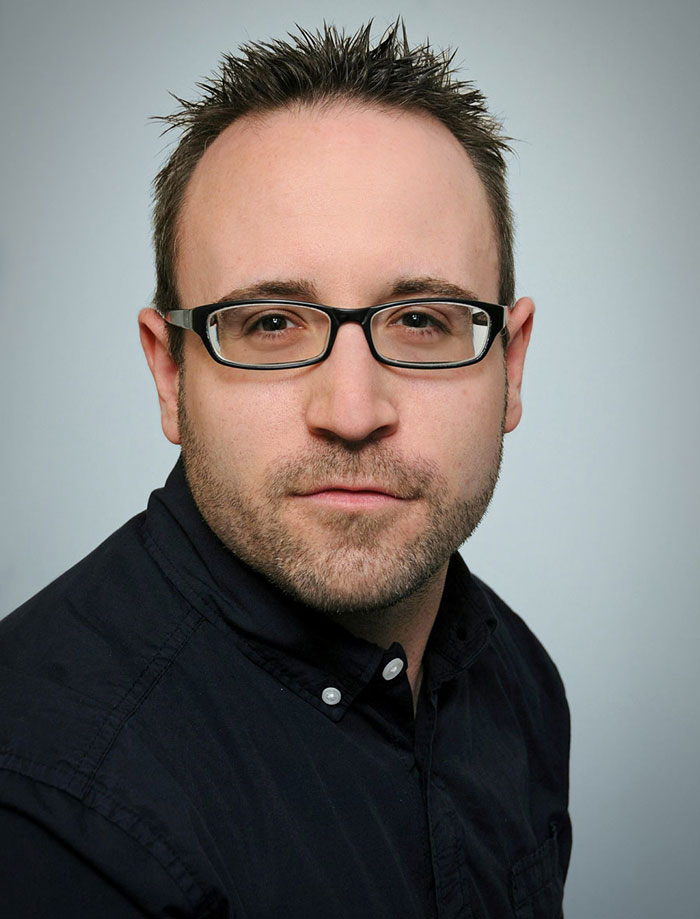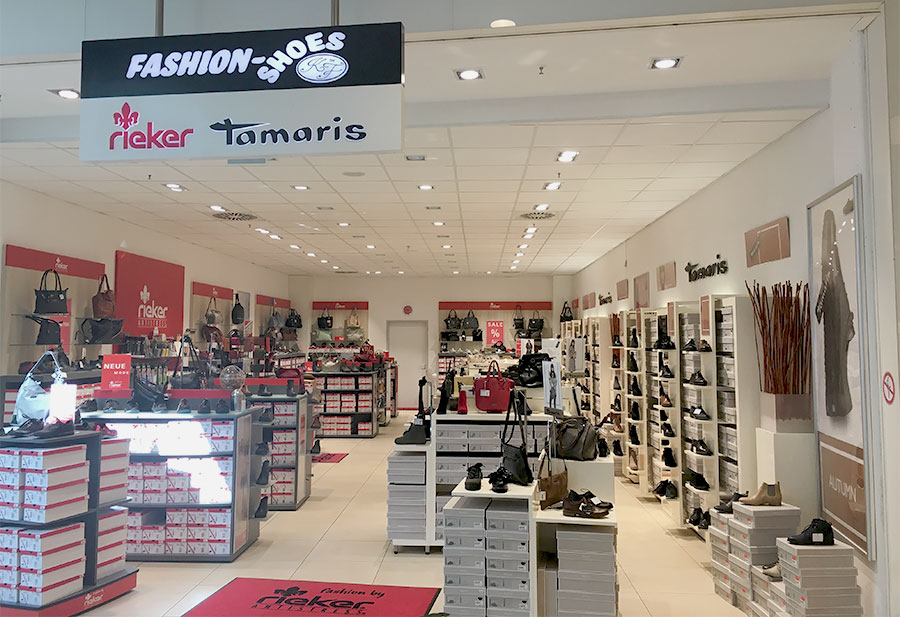Achieving the perfect fit: the Förstemann family’s 18 Rieker stores use SEAK Software IT solutions and significantly simplify staff scheduling, optimise the number of employees in terms of customer frequency and make further opportunities for improvement visible at a glance with smart analysis tools.
The “shoe family” Förstemann (company headquarters: Ahnatal near Kassel) operates 18 Rieker monobrand stores in Germany. Kerstin and Jürgen Förstemann form the management together with son Daniel and daughter Nina, as well as the only non-family member, Jonas Roth, who heads the controlling department.
The Förstemanns’ Rieker stores are located in major shopping centers and prime locations in Hesse, Lower Saxony, North Rhine-Westphalia, Hamburg and Schleswig-Holstein.
The large team of around 115 employees and plans to expand made the company look for an IT partner who excells at staff scheduling and branch controlling. An inspiring first meeting with SEAK Software quickly turned into a successful partnership.
Förstemann and SEAK – a perfect fit. Both follow the principle of reconciling company goals, employee demands and customer expectations in retail. We asked junior manager Daniel Förstemann a few questions.
Which staff scheduling problems did you plan to solve with SEAK’s software?
Daniel Förstemann: We wanted a central database for staff scheduling, in which we could manage all master data in a straightforward and clear format. Additionally, the system should provide us with easy to understand target / actual comparisons, including the comparison of planned and actual working times. All evaluations should be promptly available.
Above all, however, we wanted to move to paperless planning for working hours and to be able to fall back on a system that noticeably lightens and speeds up the workload compared to Excel spreadsheets.
How did you first get in touch with SEAK Software?
Förstemann: We got to know SEAK at a retail exhibition in 2016 and were immediately interested.
Their IT solutions were something completely different compared to what we already knew. That is also why the first presentation took three full hours. We had a lot to discuss. Additionally, a SEAK consultant visited and showed us in detail which evaluation options are possible.

What is working better now than before?
Förstemann: The working hour rosters are much easier to generate. The days and hours on which the employees can be scheduled are stored in the system. You can see at a glance who is and isn’t available and can easily access the data. In addition, data from the past, such as sales per store, are available for the selected days and serve as an important guideline for staff scheduling.
What are the consequences of these changes for you?
Förstemann: Compared to before, planning a whole month only takes 30 to 60 minutes instead of two to three hours. Importantly, the service quality has increased. This is because these days we schedule more employees to be in the shop during busy times.
The SEAK principle aims to harmonize the goals of companies and employees with the expectations of customers for service, and product availability. Do you see that realised in your stores and numbers?
Förstemann: Absolutely. Our sales employees are, of course, more satisfied if we schedule them during the most viable times to generate sales. That is, when the corresponding customer frequency is available. Customers in turn are happy about approachable employees in the shop, and the company is excited to see strong numbers for key indicators such as average receipt, parts per receipt etc.
Was there any resistance on the part of the employees when you introduced the SEAK system?
Förstemann: There were the normal concerns you would expect when introducing something new. But because important processes could now be completed much faster with SEAK than without, these concerns quickly vanished. Above all, the software offers more objective data, offering new and different insights compared to most employee self-assessments. Conversations, for example on the topic of fairly distributing working hours, are now easier.
How do you measure your success with SEAK software?
Förstemann: The shoe retail sector is undergoing structural change. During this process, we have been able to keep sales stable or even increase them. Employees are also more productive. We attribute this, among other things, to the improved ways in which we use available staff, which now more intentionally than ever corresponds with customer frequency.
How is the responsibility for staff scheduling and for working with the SEAK system managed?
Förstemann: Five of our stores are planned directly by a regional manager, another eight in close coordination with the store manager and the remaining stores are planned centrally by HQ.
Has the way you engage with your employees who handle SEAK changed at all? Are there any topics that you can now talk about in a more differentiated manner after introducing SEAK, or that you are now able to address for the first time?
Förstemann: The software is not only used for planning but is also a powerful analysis tool. Generally, all kinds of assessments are more objective now. That positively affects employee evaluations. In addition, the figures confront us with important questions. For example, why is employee A remarkably more successful (or less) than employee B, who spent approximately the same number of hours in the same area?
How do you measure the success of your investment in SEAK software?
Förstemann: More than anything by how swiftly we are able to react to short-term changes at each location in relation to staff scheduling.
Which evaluations are your favourite to look at?
Förstemann: Those that show me whether we got the plan right, i.e. whether the right number of employees were on the floor. For in-depth analyses, I use the TPM, i.e. the Team Performance Monitor from SEAK. Here I am particularly interested in the productivity of each employee and how the average receipt and product groups develop over time.
SEAK’s TPM aims to make actual performance and further potential easily recognisable at a glance; to benchmark departments or entire regions, and to show where targets are achieved, as well as deviations from it. What is your impression of the TPM?
Förstemann: The best thing about it is how easy it is to use and understand. Stores in structurally similar locations that perform strikingly different for specific key performance indicators can now easily be identified. You can also see the most important key figures at a glance, for example, for each employee, location or timeframe.
This support enables store management to take the right measures promptly, such as providing individual employees with further training. Through this, we are already improving the service quality, and increasing the value of the average receipt and additional sales of miscellaneous items.
A brief comment about SEAK’s telephone support. What is your experience?
Förstemann: Excellent. So far, every problem has been solved extremely quickly. This is also possible because our data are stored on a SEAK server, so that their support staff can access them if necessary.
What makes working with the SEAK team special?
Förstemann: They simply know what they are talking about and are up-to-date on topics that are interesting for retailers. If a problem appears anywhere, they will find that solution that you just could not have come up with yourself.
What surprised you the most?
Förstemann: That everything is so easy to understand, very organised and that it runs reliably. I get the information I am looking for very quickly.
Have there been any eye-opening moments for you based on the data evaluation options?
Förstemann: Yes. There were some stores that we thought were doing particularly well. But the numbers provided by SEAK’s evaluations revealed a different picture. There were also surprises in terms of the number of hours actually used in relation to sales – positive and negative.
What do you want to see from SEAK in the future?
Förstemann: That everything keeps running as smoothly as it does now. As a next step, I can also imagine combining key figures such as “hourly turnover per employee” with a frequency measurement.
What other plans do you have for the future?
Förstemann: We want to test SEAK’s mobile shift rota application next year. With it, every employee could access their working hour schedule via their smartphone regardless of location.
We would like to thank Mr. Daniel Förstemann for the interview. The interview was conducted by retail journalist Bruno Reiferscheid.
Read more success stories here >
Photos © Schuhhandel Kerstin Förstemann
